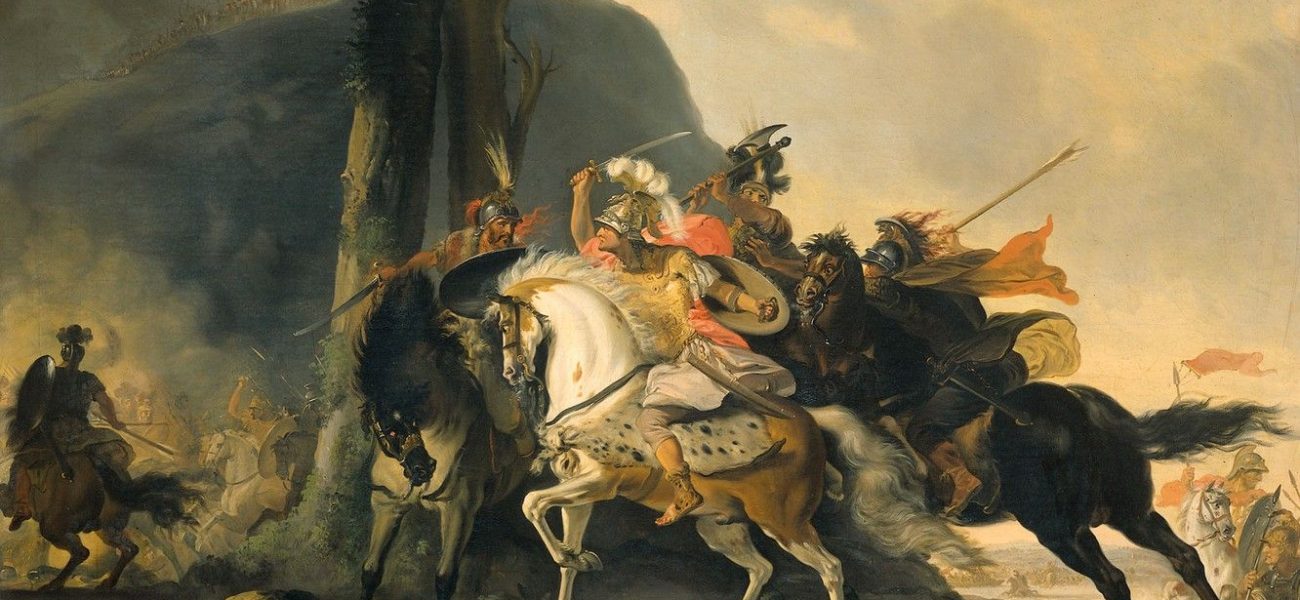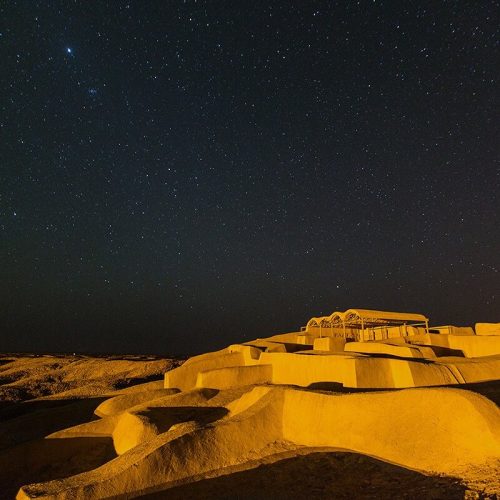In the annals of Persian history, few epochs rival the tumultuous and transformative era of the Seleucid dynasty. This Hellenistic realm, born from the ashes of Alexander the Great’s conquests, cast a long shadow over the lands once ruled by the mighty Achaemenids. From the windswept steppes of Central Asia to the sun-baked shores of the Mediterranean, the Seleucid kings sought to forge a new synthesis of Greek and Persian cultures, leaving an indelible mark on the tapestry of Iranian civilization.
The Dawn of a New Era: Historical Background
To comprehend the rise of the Seleucids, one must first cast one’s gaze upon the cataclysmic events that reshaped the ancient world in the latter half of the 4th century BCE. The young Macedonian conqueror, Alexander, son of Philip, swept across the known world like a tempest, toppling the venerable Persian Empire that had stood for two centuries. In but a mere decade, the political landscape of Asia was irrevocably altered.
Yet Alexander’s untimely demise in 323 BCE left a power vacuum that his generals, the Diadochi, rushed to fill. Among these ambitious men was Seleucus I Nicator, a commander of exceptional acumen and relentless ambition. It was he who would lay the foundations of the dynasty that would bear his name, carving out a vast realm that stretched from the Aegean Sea to the borders of India.
The year 312 BCE marks the genesis of the Seleucid era, when Seleucus secured control of Babylon, the jewel of Mesopotamia. From this ancient seat of power, he embarked upon a series of campaigns that would see him reconquer much of Alexander’s eastern empire. The lands of Iran, long accustomed to the rule of the Achaemenids, now found themselves under the aegis of a new, Hellenistic overlord.
The Pantheon of Seleucid Sovereigns
The lineage of Seleucid monarchs forms a veritable pantheon of rulers, each leaving their unique imprint upon the pages of history. Let us now turn our attention to some of the most notable among them, whose reigns shaped the destiny of Persia and the wider Hellenistic world.
Seleucus I Nicator (312-281 BCE)
The eponymous founder of the dynasty, Seleucus I Nicator (“the Victor”), was a man of remarkable martial prowess and political acumen. Having secured his power base in Babylon, he set about expanding his dominion, pushing eastward into the Iranian plateau and beyond. His victories against the Indian king Chandragupta Maurya secured the Seleucid hold over the eastern provinces, while his triumphs in Asia Minor consolidated his western territories.
Seleucus’ reign was marked by the founding of numerous cities, chief among them Seleucia on the Tigris, which would serve as the early capital of the empire. This policy of urbanization and Hellenization would become a hallmark of Seleucid rule, forever altering the cultural landscape of the Near East.
Antiochus I Soter (281-261 BCE)
The son of Seleucus I, Antiochus I Soter (“the Savior”) inherited a vast but unwieldy empire. His reign was characterized by continuous warfare, as he struggled to maintain the territorial integrity of his father’s conquests. Despite these challenges, Antiochus proved a capable ruler, successfully repelling Gallic invasions in Asia Minor and consolidating Seleucid control over the eastern satrapies.
It was during his reign that the synthesis of Greek and Iranian cultures began to take more definitive shape. Antiochus actively promoted the cult of Apollo, identifying the Greek deity with various local divinities, thus laying the groundwork for the syncretic religious practices that would come to characterize the Seleucid realm.
Antiochus III the Great (223-187 BCE)
Perhaps the most renowned of all Seleucid monarchs, Antiochus III earned his epithet “the Great” through his ambitious campaigns and territorial reconquests. Ascending to the throne at a time when Seleucid power had waned considerably, Antiochus set about restoring the empire to its former glory.
His eastern campaigns saw him march as far as the Hindu Kush, reaffirming Seleucid suzerainty over the Iranian plateau and Central Asia. In the west, he successfully challenged Ptolemaic control of Coele-Syria and Palestine. However, his ambitions ultimately led to conflict with the rising power of Rome, culminating in his defeat at the Battle of Magnesia in 190 BCE.
Despite this setback, Antiochus III’s reign marked the apogee of Seleucid power and influence. His administrative reforms and cultural policies further cemented the Hellenistic character of the empire, while simultaneously incorporating elements of Persian tradition.
The Decline: From Antiochus IV Epiphanes to Antiochus XIII Asiaticus
The reigns of the later Seleucid kings were marked by a gradual erosion of imperial power and territorial control. Antiochus IV Epiphanes (175-164 BCE), though remembered for his cultural achievements and the infamous persecution of the Jews, struggled to maintain the empire’s cohesion in the face of rising internal and external threats.
Subsequent rulers such as Demetrius I Soter, Alexander Balas, and Demetrius II Nicator found themselves embroiled in dynastic disputes and regional conflicts, while simultaneously contending with the encroachment of Parthian power from the east. The once-mighty Seleucid realm contracted, its grip on the Iranian heartland slipping away.
The final century of Seleucid rule was a period of protracted decline, as successive monarchs fought vainly to preserve their dwindling territories. The last Seleucid king, Antiochus XIII Asiaticus, ruled over a mere rump state in Syria before being deposed by the Roman general Pompey in 64 BCE, thus bringing the curtain down on this remarkable dynasty.
The Seleucid Family Tree: A Tapestry of Royal Lineages
The genealogy of the Seleucid house is a complex web of marriages, adoptions, and usurpations, reflecting the often tumultuous nature of Hellenistic politics. At its core, however, we can discern a central line of descent from Seleucus I Nicator through his successors.
Seleucus I’s union with the Bactrian princess Apama produced his heir, Antiochus I Soter, thus establishing a dynastic connection to the eastern territories of the empire. Subsequent generations saw marriages with other Hellenistic royal houses, most notably the Ptolemies of Egypt, in an attempt to forge alliances and legitimize claims to contested territories.
The practice of sibling marriage, adopted from Egyptian custom, was occasionally employed by later Seleucid rulers, further complicating the family tree. This intricate network of relationships often led to competing claims to the throne, resulting in periods of civil war and fragmentation that ultimately contributed to the dynasty’s downfall.
The Seleucid Reign in Persia: A Legacy of Hellenization and Synthesis
The impact of Seleucid rule on the Iranian plateau and the wider Persian world cannot be overstated. For nearly two centuries, these Macedonian-Greek kings presided over a realm that encompassed the heartlands of the old Achaemenid Empire, instituting policies and cultural practices that would leave an enduring mark on the region.
Administrative Innovations and Urban Development
The Seleucids inherited the sophisticated administrative apparatus of the Achaemenids, adapting it to suit their own needs. The empire was divided into satrapies, each governed by a royally appointed satrap, often of Macedonian or Greek origin. However, local Persian elites were frequently incorporated into the administrative hierarchy, ensuring a degree of continuity with past practices.
One of the most visible legacies of Seleucid rule was the foundation of new cities and the expansion of existing urban centers. These poleis, modeled on the Greek city-state, became focal points of Hellenistic culture and administration throughout the empire. Cities such as Seleucia on the Tigris, Antioch in Syria, and Ai Khanoum in Bactria stood as testament to the Seleucids’ urban vision, blending Greek architectural forms with local building traditions.
Cultural Synthesis and Religious Syncretism
The Seleucid period witnessed a remarkable fusion of Hellenistic and Iranian cultural elements. Greek language and literature spread throughout the empire, becoming the lingua franca of the educated elite. The Greek gymnasium and theater were introduced to Persian cities, while Greek artistic styles influenced local craftsmanship and iconography.
Yet this was not a one-way process of Hellenization. The Seleucid kings, particularly in the later periods, actively incorporated Persian and Mesopotamian elements into their royal ideology and court culture. The ancient title of “King of Kings” was revived, and Seleucid monarchs increasingly presented themselves as heirs to both the Achaemenid and Alexandrian legacies.
In the religious sphere, a fascinating syncretism took place. Greek deities were often identified with their Persian or Mesopotamian counterparts, leading to the emergence of new, hybrid cults. The worship of Ahura Mazda, the supreme deity of Zoroastrianism, continued alongside the veneration of the Olympian pantheon, while local religious practices were generally tolerated and sometimes incorporated into official state cults.
Economic and Technological Advancements
The Seleucid era saw significant developments in trade and economic activity across the Iranian world. The vast expanse of the empire, stretching from the Mediterranean to Central Asia, facilitated long-distance commerce and cultural exchange. New trade routes were established, and existing ones revitalized, linking the urban centers of the empire with the wider Hellenistic world and beyond.
Technological innovations, particularly in the fields of agriculture and metallurgy, were introduced or further developed during this period. The famous qanat irrigation systems, though predating the Seleucids, were expanded and refined, enabling the cultivation of arid regions and supporting urban growth.
The Waning of Seleucid Power and the Rise of Parthia
As Seleucid control over the eastern provinces began to slip in the mid-2nd century BCE, new indigenous powers emerged to fill the vacuum. Chief among these was the Parthian Empire, founded by the Arsacid dynasty. Originally nomadic warriors from the Central Asian steppes, the Parthians gradually expanded their influence across the Iranian plateau, eventually supplanting Seleucid rule entirely.
The Parthian ascendancy marked a resurgence of Iranian political and cultural identity, though one that was deeply influenced by the Hellenistic legacy of the Seleucids. The synthesis of Greek and Persian elements that had begun under Seleucid rule would continue to evolve, shaping the cultural landscape of Iran for centuries to come.
Epilogue: The Enduring Legacy of the Seleucid Era
As we cast our gaze back across the centuries, the Seleucid dynasty emerges as a pivotal chapter in the long and storied history of Persia. These Hellenistic kings, though foreign in origin, became in many ways the heirs to the Achaemenid legacy, preserving and transforming the political and cultural traditions of ancient Iran.
The Seleucid era bequeathed to posterity a rich tapestry of cultural, artistic, and intellectual achievements. The fusion of Greek and Persian elements that characterized this period would continue to resonate through subsequent epochs, influencing the development of Iranian civilization well into the Islamic era and beyond.
Though their empire ultimately crumbled, falling victim to internal strife and external pressures, the Seleucids left an indelible mark on the lands they once ruled. In the grand narrative of Persian history, their reign stands as a testament to the enduring capacity of Iranian civilization to absorb, adapt, and synthesize diverse cultural influences, emerging ever renewed yet ever true to its essential character.
As we, the inheritors of this vast and complex legacy, continue to excavate the layers of our past, the Seleucid dynasty remains a source of fascination and insight, offering valuable lessons on the nature of empire, cultural exchange, and the perennial dialogue between tradition and innovation that has shaped the course of human civilization.




